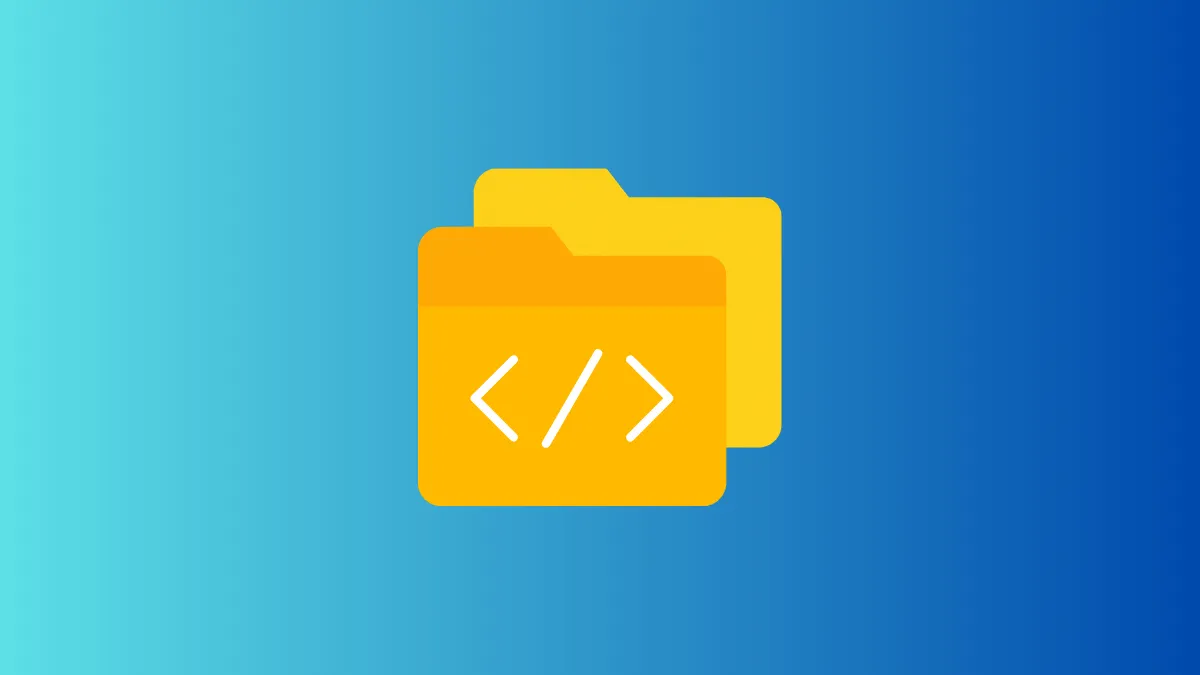The AppData folder is a vital component found within every Windows system. It serves as a repository for various crucial data related to programs, including settings modifications and interface customization.
Accessing the AppData folder proves beneficial when you intend to reset program settings or eliminate user-specific configurations for a particular application.
What is the AppData Folder?
The AppData folder is a crucial part of your system, containing three subfolders: Local, LocalLow, and Roaming. It serves as a repository for various app data, such as browser bookmarks, cache, saved sessions, gaming settings, and more.
The Local folder pertains to the current PC and is not synchronized with other systems. On the other hand, the LocalLow folder is similar to Local but caters to low-integrity apps with restricted Windows security settings, like temporary files.
The Roaming folder holds essential app files that an app requires to function properly. This data "roams" along with your user account, seamlessly transferring from one PC to another. For instance, your Spotify settings or Mozilla Firefox profile data will accompany you across devices.
By default, the AppData folder is located at C:\Users<YourUsername>\AppData (where <YourUsername> represents your user account folder). While it is possible to manually navigate to this folder, it may prove challenging for inexperienced users to locate.
Opening the AppData Folder Using Run Command Utility
- Press
Windows+Rkeys simultaneously on your keyboard to bring up the Run Command Utility. - Type or copy and paste the below-mentioned command and hit
Enter. This will open a new File Explorer window on your screen.
%AppData%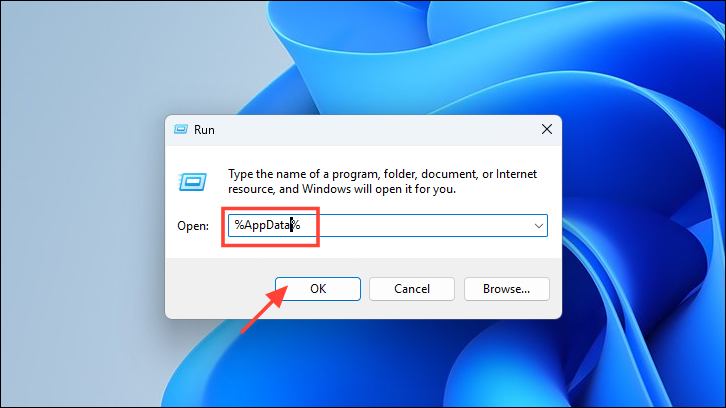
- The File Explorer window will open in the 'Roaming' subfolder of AppData. To access other sub-folders, click on 'AppData' on the address bar.
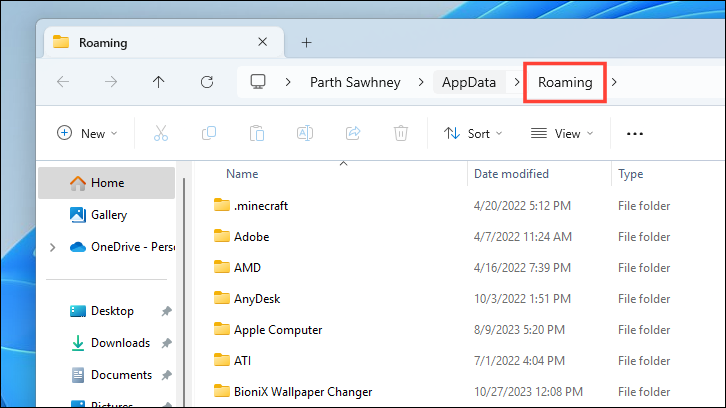
- You can then double-click on any of the sub-folders to access them.
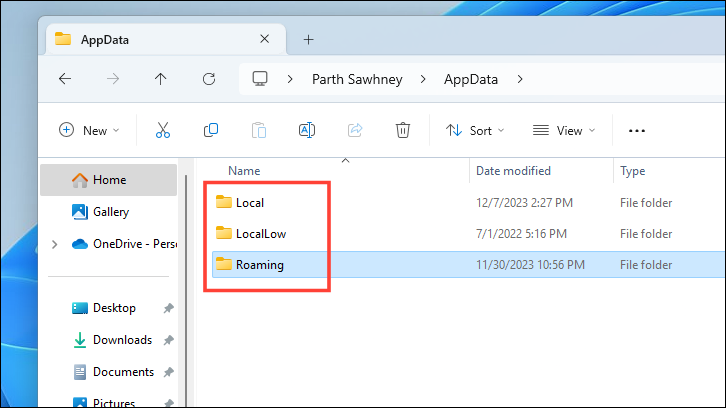
Accessing AppData Folder in File Explorer
The AppData folder is typically hidden by the system and hence, when you go looking for it in the designated directory, you might not be able to find it. Thus, you will need to first enable 'Hidden items' on the File Explorer to view the folder.
- Double-click on the 'This PC' icon or press
Windows+Eon your keyboard simultaneously to open File Explorer. - Type or copy and paste the following address below-mentioned address in the address bar and hit
Enterto navigate to it.
C:\Users\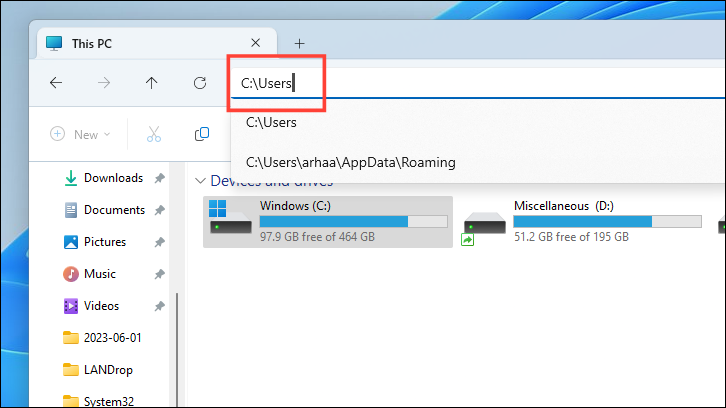
- Click on the 'View' tab on the ribbon menu. Then, hover over the 'Show' menu item and select 'Hidden items' from the extended options.
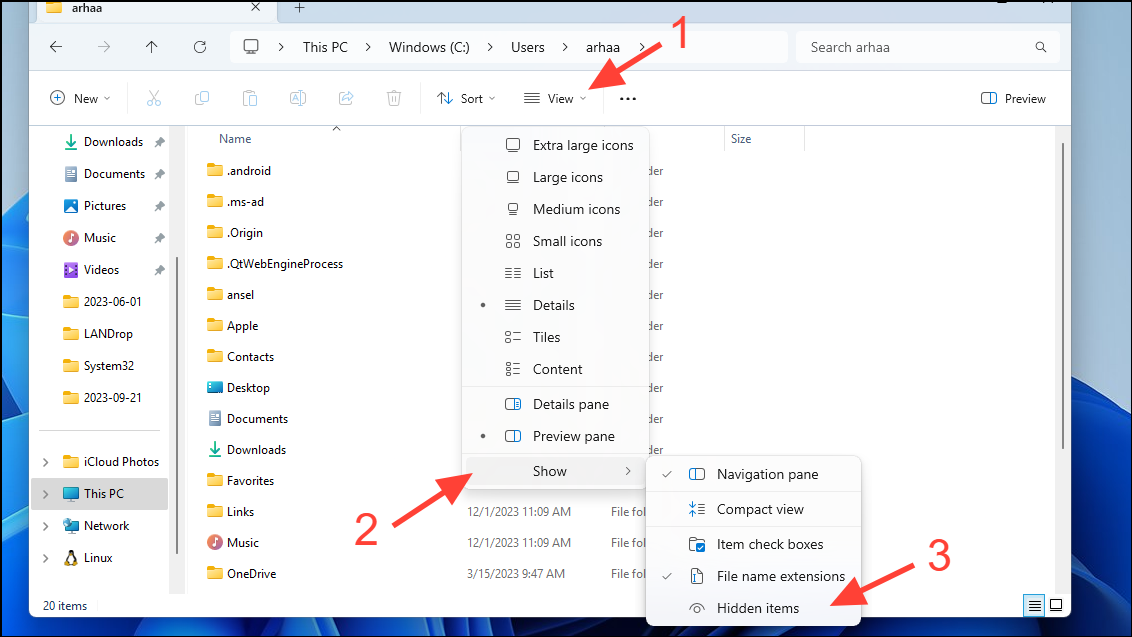
- You will then be able to see the 'AppData' folder in the directory. Double-click on it to access all the subfolders.
Accessing the AppData folder offers valuable advantages when it comes to backing up beloved game settings or resolving issues with specific applications. Nonetheless, it is vital to exercise caution in this process. It is important to note that deleting any file, even unintentionally, could potentially make an application inoperable.

